- Home
- Patrick O'Brian
The Final Unfinished Voyage of Jack Aubrey
The Final Unfinished Voyage of Jack Aubrey Read online
PATRICK O’BRIAN
The Final Unfinished
Voyage of Jack Aubrey
Contents
Cover
Title Page
Foreword by William Waldegrave
Diagram of a Square-Rigged Ship
The Final Unfinished Voyage Of Jack Aubrey
Chapter One
Chapter Two
Chapter Three
Facsimile of the Manuscript
Chapter One
Chapter Two
Chapter Three
Afterword by Richard Snow
Editor’s Note
About the Author
The Works of Patrick O’Brian
Copyright
About the Publisher
Editor’s Note
When Patrick O’Brian died in early January 2000, he left 65 handwritten pages of the untitled twenty-first novel in the Aubrey/Maturin series. He had also begun typing the same material and had made revisions to the typescript.
The printed version here presented follows the author’s revised typescript, with the correction of a few obvious omissions and errors of spelling. But it is not to be supposed that these pages are exactly as O’Brian would have wanted them to be in a final draft, or had he seen proofs of his book. There are occasional word repetitions and rhyming echoes that he would surely have caught on subsequent readings. The typescript ends in mid-sentence, and chapter 3 continues – without conclusion – in O’Brian’s own hand. The facsimile pages include such wonderful curiosities as O’Brian’s sketch of the seating arrangements for a dinner party, and the reader is granted a last, intimate glimpse of this extraordinary writer practising his craft.
Foreword by William Waldegrave
This book contains a fragment. It is the beginning of a beginning of Patrick O’Brian’s twenty-first novel, left uncompleted at his death. We do not know the shape of the story he had planned; he left no outline or sketch. We do not have a finished version of any of the three chapters, the manuscript and typescript of which are reproduced here. Much further perfectionist, painstaking work would have gone on before that eagle eye would have been satisfied.
But what we do have is of extraordinary interest to lovers of O’Brian’s magnificent naval series. The personal glimpse we get of this intensely private man at work is both moving and impressive. We see a master craftsman, still in full possession of his craft, pressing on, even in old age, with the same dedication and courage which, through a long life containing many set-backs and vicissitudes, brought him in the end to fame and success.
It is rather as if we had opened the door to the studio of a great painter and found that he had left a canvas on the easel, almost entirely untouched – this is not one of those painters who sketch in the whole and then overpaint – but with one corner glowing with some fine colours. Some detail is already there, worked up; some brush strokes are clearly sketched, to be revisited; others point to the architecture of the whole and give an inkling of what the completed structure might have looked like.
Most touchingly, as in the margins of Edward Lear watercolours, we also find personal little notes and memoranda written to himself; there he is, suddenly, Patrick O’Brian himself, rubbing shoulders on the page with Jack Aubrey and Stephen Maturin in the same fine handwriting.
Uncovering the way in which O’Brian writes is a task for the professional literary scholar, not for me. But, looking at these manuscript pages, and at the typescript, certain conclusions seem to suggest themselves.
First, O’Brian seems to work at several levels in terms of completeness at the same time. On one level, the frontier of the story is pushed forward boldly, with a broad brush – surely leaving behind gaps for later infilling. Thus we sweep across the southern Atlantic from the Strait of Magellan to the coast of South Africa, providing a structure for the first quarter or so of the book in outline, but leaving plenty of room for the insertion not only of detail but also, and without difficulty, of quite substantial further episodes.
Then, at another level of finish, there are episodes well worked up and broadly complete, like the meeting between Jack and his black papal nuncio son, Sam, in Buenos Aires. Here, more polishing undoubtedly would have been done, but I would be surprised if anything much would have changed.
Finally, there are paragraphs not only worked up but perfect and complete. Take the moment – so central to Jack’s life-long ambition – when his rear-admiral’s flag is finally broken out at the mizzen of his own first flagship:
‘The folded bundle soared aloft, followed with the utmost concentration by all hands: at exactly the right moment, the exact height to an inch, the coxswain snapped the tie and the rear-admiral’s blue flag streamed out bravely in the wind, instantly greeted by the first of thirteen solemn guns, enormously loud, salutes from all the members of the squadron, distant cheering from Surprise and clouds of wheeling, discontented gulls.’
This seems to me perfect, but it has taken many careful revisions to achieve, with the seagulls, in particular, overpainted again and again: ‘uneasy’, ‘complaining’, ‘querulous’ are all tried for size, but to my ear the typescript version is best and would surely have remained.
So that square inch or two of the canvas is finished, almost unvarnished, while the majority remains quite blank, and surrounding areas are only sketched and touched in.
If I am right, and O’Brian is pushing forward the story at different levels of completeness at the same time, with almost everything subject to revision, and with the possibility of considerable revisions (these unfinished chapters are, after all, a good deal shorter than most of those in the completed books), it is worth pausing for a moment on the themes which these early chapters promise. We can allow ourselves the luxury of dreaming about what might have been the elements of this story.
Some are well signalled. Lord Leyton is obviously going to be a choleric and difficult commander-in-chief. If Jack could lose his temper so dangerously all those years before in the Admiralty boardroom with Lord St Vincent himself, how much more danger is there of ructions and rows with Lord Leyton?
Then there is Maturin’s flowering relationship with the intelligent, long-legged naturalist, Christine: is Maturin at last to find unclouded happiness? The hope inclines one to make the sign against the evil eye, sharing the superstition of the sailors; so often O’Brian, who in so many ways models Maturin closely upon himself, seems to inflict disaster on his fictional alter ego.
And we are on the way to the Cape, taken not so long ago from the Dutch, and then, as now, a hotbed of complex politics and, of course, a paradise for the botanist and naturalist. I am sure Stephen would have encountered an oryx, at least. The fleet is to be based at the Cape to protect the India and China trade: pirates, opium and perhaps Burmese adventures lie without too much anachronism to the east.
But to the west lies one place about which surely we are meant to hear more, whether on the way to the Cape or later: St Helena. Can we really have Jack and Stephen within range of the imprisoned Napoleon without some encounter? Indeed, Lord Leyton announces that he will interview the unfortunate Emperor and explain to him how he might have won the battle of Waterloo.
What is more, O’Brian, like Marryat and Forester before him, borrows freely from the extraordinary career of Thomas Cochrane, Lord Dundonald, the greatest frigate captain of the age. Cochrane went to Chile and Brazil for the same purpose as did Aubrey in Blue at the Mizzen, and their adventures are not dissimilar. Cochrane never actually called on Napoleon (who called him ‘that sea wolf’) but he planned to do so, and in the most extraordinary circumstances. He concocted a harebrained scheme for rescu
ing the great man and carrying him off to Brazil, there to install him as the Emperor of South America, a scheme which, not surprisingly, was never brought to fruition (though history would have been much more fun if it had been).
While Cochrane was a radical, who still admired Napoleon for his revolutionary youth, Jack Aubrey is a Tory through and through, and Maturin hates Napoleon, whose secret police have tortured him, and considers him a tyrant who has destroyed the small nations of Europe. No scheme of Cochrane’s type would have been entertained for a moment on board HMS Suffolk. But I still cannot imagine that we should have not had some encounter. We will never know.
The fascination of these pages lies in the privilege they give us of seeing, most intimately, the master at work. There is sadness in it: his beloved wife Mary had died, and she was the background to the whole of his mature writing life. She typed his manuscripts and, I suspect, discussed them with him. Without Mary, he could not manage the house in French Catalan Collioure; so he was no longer working in the familiar cave-like writing-room under the house that he had himself largely designed and built, with everything to hand exactly where he wanted it.
We see him now struggling to keep at least two manuscript versions in order, clearly doing his own typing, somewhat erratically, and sometimes apparently composing directly onto the typewriter as well as with the pen. Some manuscript pages are fair copies, in a strong clear hand, others are not. There are overlapping pages, repetitions, excisions, notes to himself. There is a considerable episode (the duel which Maturin fights) which is not yet in the typescript at all. There are distressing notes at the end where he thinks he has lost some of chapter three (and suspects – in a phrase that is pure Maturin – ‘a malignant hand’). Evidently, it was found again, because here we have it with the table plan for Lord Leyton’s dinner in the margin, just as he describes.
It is impossible not to be moved by the courage and anxiety of O’Brian, now an old man and alone (though, to his infinite pleasure, pride and gratitude, sheltered and honoured by Trinity College, Dublin), as he tries to keep his pages in order, writes notes about the need for more ink-cartridges for his pen, and on one page writes, very small, ‘I am absurdly sleepy’, in the way that medieval scribes sometimes wrote comments about the weather or their health in the margins of the illuminated manuscripts on which they were working.
It is the courage that is most striking: the discipline, the will. He has no intention of retiring or throwing in the towel. I leave it to the reader to judge, but out of these fragments, these very fragmentary fragments, I have no doubt that another fine story would have been built if he had had time.
Part of the strength, it might seem, flows back from the very characters he has himself created. It is as if these old friends offer their author comfort. Not for him the prickly and hostile relationship between Conan Doyle and Sherlock Holmes. O’Brian does not want to push Aubrey or Maturin over the Reichenbach falls in order to free himself of their tyranny, as Conan Doyle (unsuccessfully) did Holmes, in order to return the spotlight to such books as The White Company which he thought his best.
On the contrary, O’Brian loves Aubrey, and is increasingly indistinguishable from Maturin who loves Aubrey too. It is impossible for those of us who were lucky enough to know him not to hear O’Brian in every sentence of Maturin – and vice versa. Such speculation is dangerous, but perhaps we can catch a faint echo, in the opening passage of chapter one, where Maturin struggles with paper and pens and fusses about completing a letter to Christine, of O’Brian’s own efforts to restore order to his recalcitrant ring-binders. But we should be careful: O’Brian, like all great artists, had a powerful and concentrated will, and there was no more self-pity in him than there is in Maturin.
Nevertheless, in these pages it is perhaps not too fanciful to imagine that O’Brian has accorded himself the comfort of slipping into the world he has created in order to take refuge among his characters: gossiping with them about old adventures and planning out with them new stories. Sitting with them, perhaps, in the new rear-admiral’s great cabin over a bottle or two of that lovely claret he delighted to pretend was ‘un petit vin de famille’ – Chateau Haut Brion.
I have said that it seems to my unprofessional eye that what we read here is not a first or second draft of something which would necessarily remain in this shape, awaiting only polishing. Rather, if I am right, we have some finished paragraphs set in a sketched structure which itself might well have been revisited (to accommodate Napoleon, for example), expanded, contracted, pushed about until he had his twelve or fourteen chapters roughed in, and then all to be redone again to the level of perfectionism which would have satisfied him. To return to my analogy of the painter, reading these pages is like watching the master getting out his brushes, mixing his colours, preparing his canvas, starting to paint one part of his great design, sketching a little, revisiting and working up some corner which has already gone well.
It is not like uncovering one perfect incomplete section cut from a finished canvas; we should not judge it like that; but characteristic brush strokes of the master are there. I delight in the unexpected adjectives, which hint at other little stories or digressions which could be followed up if you so wished: ‘improbable quantities of port’; a ‘shameless wombat’. I love the unexplained mystery of the obscurely strewn drowned dogs, not to mention the cabbage-selling werewolf in chapter one. Sometimes you can see a tiny change made that transforms the first sketch into the finished O’Brian: how much better surely is ‘seventy of the finest guinea pigs’ than the first draft’s ‘some…’ And how typical of O’Brian to enjoy the somewhat shocking fact (to English sensibilities at least) that in parts of Latin America our children’s furry friends are indeed a delicacy on which one dines.
Imagine ourselves as literary scholars of the thirty-first century, experts in textual reconstruction. All O’Brian’s completed books have been lost like the scrolls of Sappho’s lyric poetry in some future equivalent of the Christian burning of the library of Alexandria or the Crusader sacking of Byzantium. By chance, only this book has survived. We future scholars would be intrigued, and a little puzzled. How could so many first-rank critics and so many excellent fellow novelists (their reviews have somehow survived my putative literary holocaust) have acclaimed O’Brian as the greatest historical novelist of his age? Or, as some would have it, of any age?
At first, we would find it hard to understand. But then the best of us, some future TJ Binyon or John Bailey, would get it. They would draw attention to the completed and polished paragraphs, where we have them, and ask us to imagine a whole book written in such elegant, exact and evocative prose – rather as we take the few lines we have left of Sappho and imagine the lost volumes of her poetry.
They would see at once the depth of learning – about history, the Royal Navy of the time, the scientific knowledge of the time (particularly natural history, medicine and astronomy) – worn so lightly but deployed so securely. (See how he grounds his description of the birds of the Strait of Magellan on Darwin himself in the note to page 7 of the manuscript.)
They would grasp at once the sense of historical drama, the sweep of great events in the background, setting off the passionate commitment to the individuality of the dramatis personae in the foreground.
They would understand the sympathy for the close-knit community of a sailing warship – that mixture of camaraderie and claustrophobia caught so brilliantly by Peter Weir’s film Master and Commander: the Far Side of the World.
They would see the humour just under the surface of so much of the writing: the sort of joke implied by the ‘almost’ in the Argentine official’s suspicions that these northerners are ‘given to cursing the Holy Father almost every day’. They would suspect that O’Brian was a writer who could make us laugh as well as cry.
They would not be able to imagine the full riches from this fragment, of course, any more than we can imagine everything that lay behind Sappho’s reputation in
antiquity from the bits and pieces which have survived. Nor would they be able to imagine the sheer tension of the sea chases in the completed books – page after page as that relentless Dutchman pursues them through the mountainous seas of the roaring forties in Desolation Island.
Perhaps, brought up short, for example, by that werewolf, they might have wondered about O’Brian’s interest in taking us down strange, almost ghostly, unexpected pathways of the imagination – and noted the contrast between those surreal and beautiful episodes and the robust realism of his picture of life in the pubs and clubs of a smelly and raucous Regency England. But surely, no one would guess quite the otherworldly and lyrical beauty of the picture he conjures of a Buddhist Garden of Eden, in which live the charming orang-utans of The Thirteen-Gun Salute – a picture, O’Brian once told me, which was based on nothing other than his pure and extraordinary imagination.
They would not be able to predict the brilliance of the sustained comic writing of passages like the fox-hunt in Master and Commander, where both Aubrey and Maturin first meet Diana (the oxen nearly cutting a caper of their own at the end of that episode are my favourite oxen in literature).
Nothing yet written in the first workings for the twenty-first book would have shown them O’Brian’s heart-wrenching capacity to depict friendship under the extreme pressures of battle, storm, triumph, disaster and the rivalries of love which makes the Aubrey–Maturin relationship one of the great creations of literature.
However, I would be willing to bet that plenty of these things and many others which we, the readers who do have access to those other twenty finished books, know so well, would also have been there in number twenty-one if it had been finished.

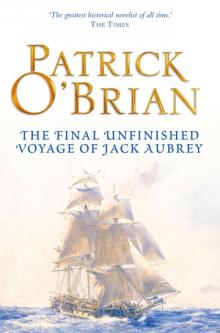 The Final Unfinished Voyage of Jack Aubrey
The Final Unfinished Voyage of Jack Aubrey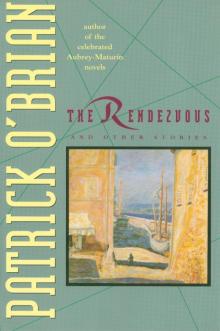 The Rendezvous and Other Stories
The Rendezvous and Other Stories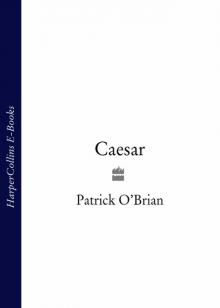 Caesar: The Life Story of a Panda-Leopard
Caesar: The Life Story of a Panda-Leopard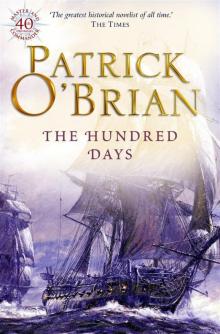 The Hundred Days
The Hundred Days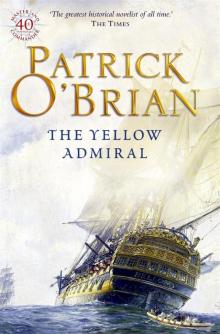 The Yellow Admiral
The Yellow Admiral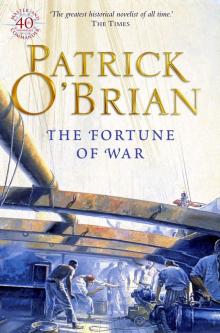 The Fortune of War
The Fortune of War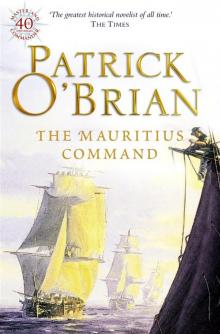 The Mauritius Command
The Mauritius Command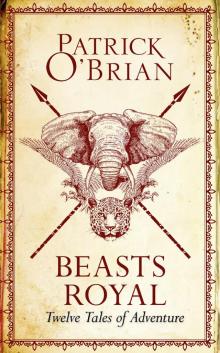 Beasts Royal: Twelve Tales of Adventure
Beasts Royal: Twelve Tales of Adventure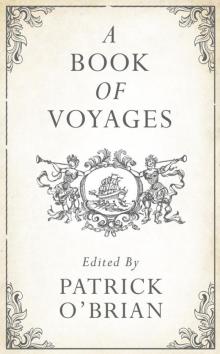 A Book of Voyages
A Book of Voyages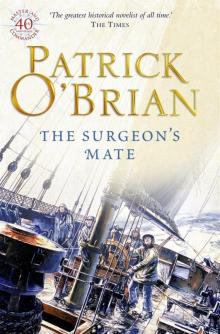 The Surgeon's Mate
The Surgeon's Mate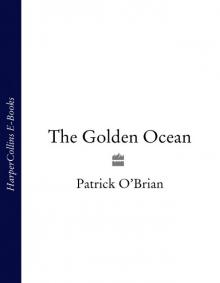 The Golden Ocean
The Golden Ocean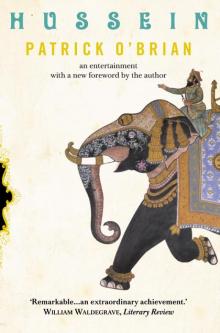 Hussein: An Entertainment
Hussein: An Entertainment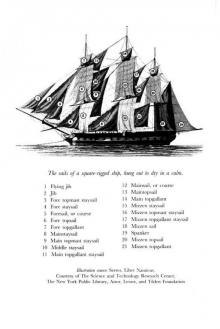 H.M.S. Surprise
H.M.S. Surprise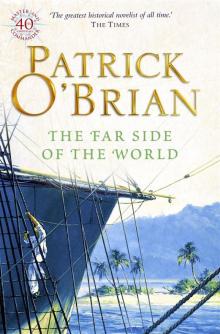 The Far Side of the World
The Far Side of the World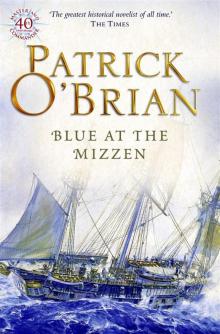 Blue at the Mizzen
Blue at the Mizzen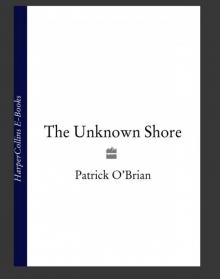 The Unknown Shore
The Unknown Shore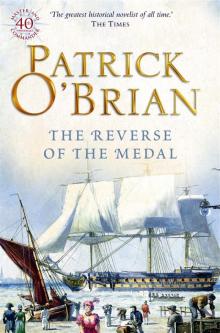 The Reverse of the Medal
The Reverse of the Medal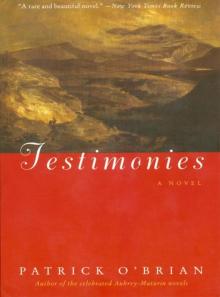 Testimonies
Testimonies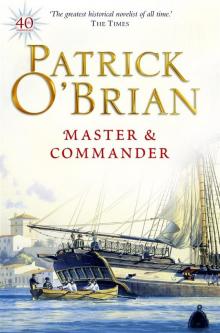 Master and Commander
Master and Commander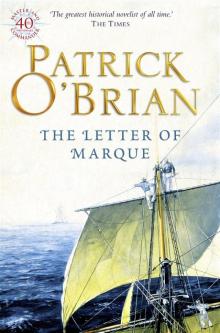 The Letter of Marque
The Letter of Marque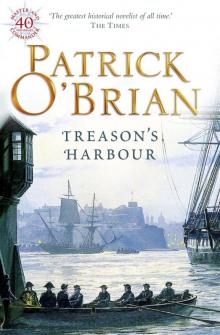 Treason's Harbour
Treason's Harbour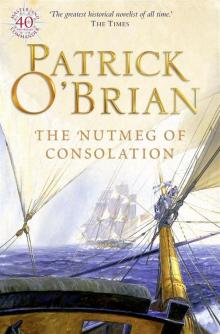 The Nutmeg of Consolation
The Nutmeg of Consolation 21: The Final Unfinished Voyage of Jack Aubrey
21: The Final Unfinished Voyage of Jack Aubrey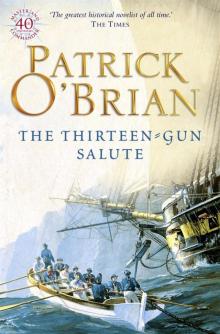 The Thirteen-Gun Salute
The Thirteen-Gun Salute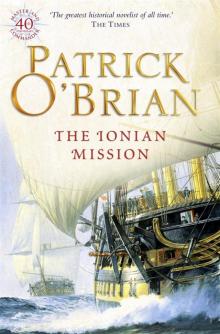 The Ionian Mission
The Ionian Mission Men-of-War
Men-of-War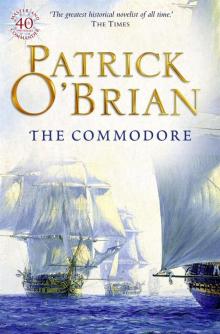 The Commodore
The Commodore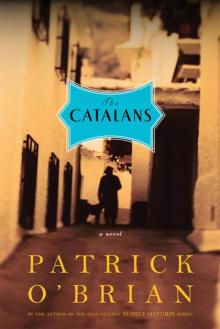 The Catalans
The Catalans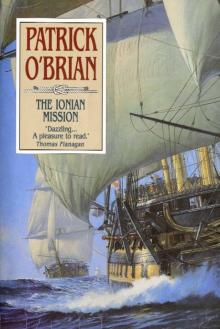 Aub-Mat 08 - The Ionian Mission
Aub-Mat 08 - The Ionian Mission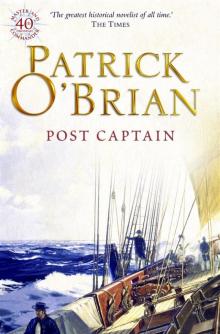 Post Captain
Post Captain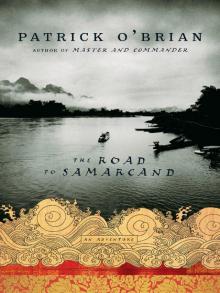 The Road to Samarcand
The Road to Samarcand Book 20 - Blue At The Mizzen
Book 20 - Blue At The Mizzen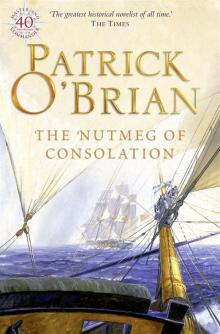 Book 14 - The Nutmeg Of Consolation
Book 14 - The Nutmeg Of Consolation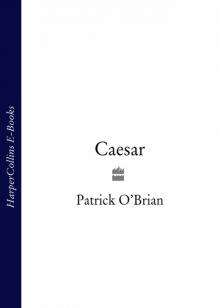 Caesar
Caesar The Wine-Dark Sea
The Wine-Dark Sea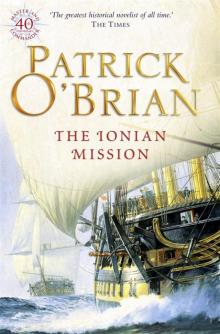 Book 8 - The Ionian Mission
Book 8 - The Ionian Mission Book 12 - The Letter of Marque
Book 12 - The Letter of Marque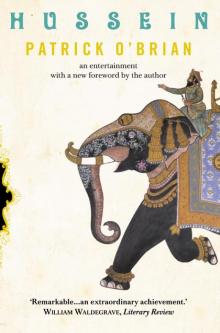 Hussein
Hussein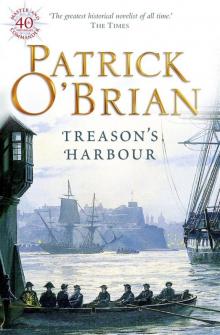 Book 9 - Treason's Harbour
Book 9 - Treason's Harbour Book 19 - The Hundred Days
Book 19 - The Hundred Days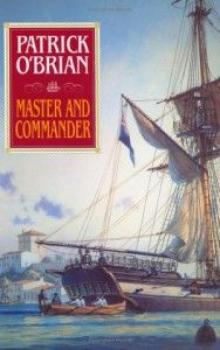 Master & Commander a-1
Master & Commander a-1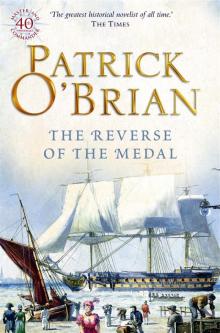 Book 11 - The Reverse Of The Medal
Book 11 - The Reverse Of The Medal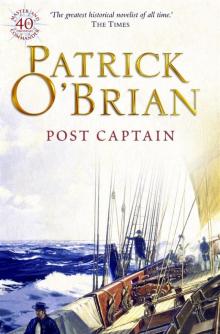 Book 2 - Post Captain
Book 2 - Post Captain The Truelove
The Truelove The Thirteen Gun Salute
The Thirteen Gun Salute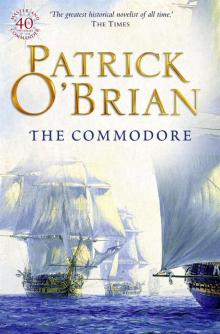 Book 17 - The Commodore
Book 17 - The Commodore The Final, Unfinished Voyage of Jack Aubrey
The Final, Unfinished Voyage of Jack Aubrey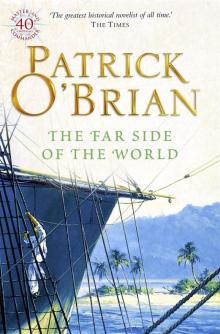 Book 10 - The Far Side Of The World
Book 10 - The Far Side Of The World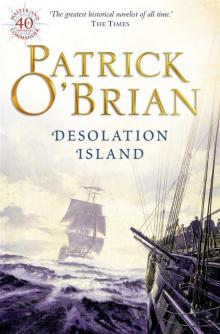 Book 5 - Desolation Island
Book 5 - Desolation Island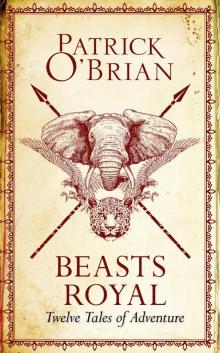 Beasts Royal
Beasts Royal Book 18 - The Yellow Admiral
Book 18 - The Yellow Admiral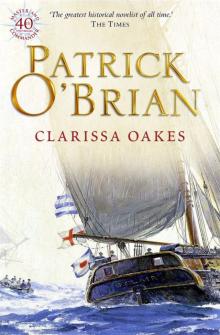 Book 15 - Clarissa Oakes
Book 15 - Clarissa Oakes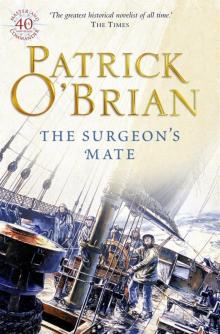 Book 7 - The Surgeon's Mate
Book 7 - The Surgeon's Mate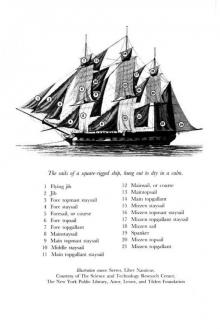 Book 3 - H.M.S. Surprise
Book 3 - H.M.S. Surprise Desolation island
Desolation island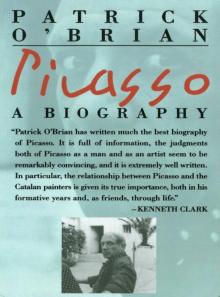 Picasso: A Biography
Picasso: A Biography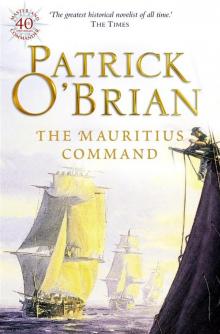 Book 4 - The Mauritius Command
Book 4 - The Mauritius Command Book 1 - Master & Commander
Book 1 - Master & Commander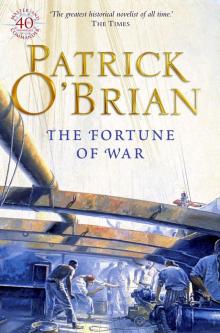 Book 6 - The Fortune Of War
Book 6 - The Fortune Of War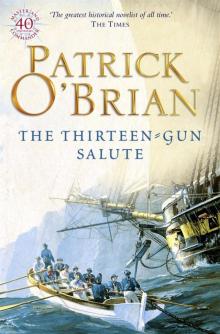 Book 13 - The Thirteen-Gun Salute
Book 13 - The Thirteen-Gun Salute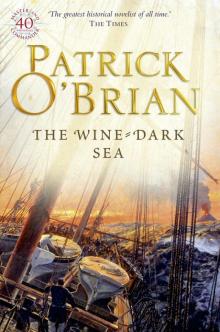 Book 16 - The Wine-Dark Sea
Book 16 - The Wine-Dark Sea